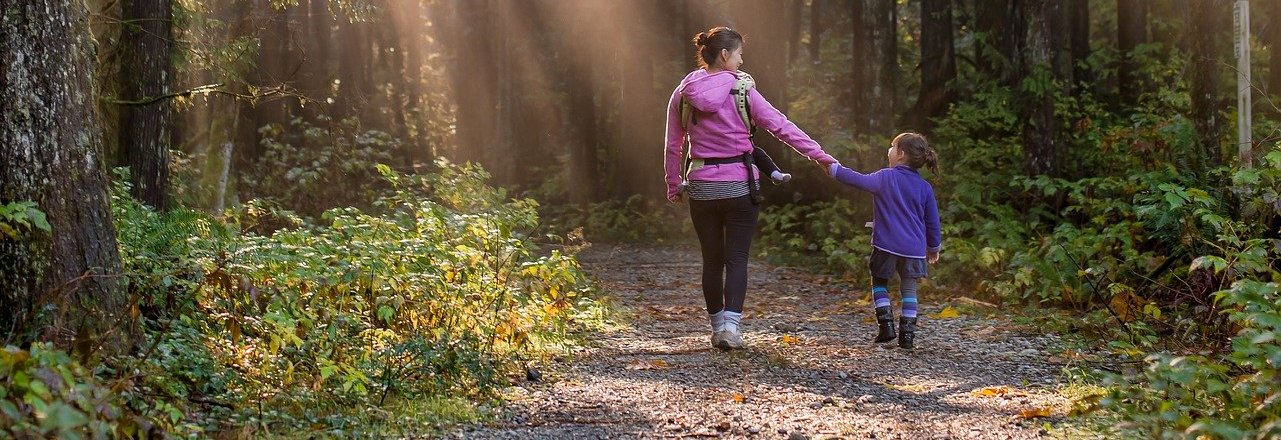A DEPUTY HEAD TEACHER SHARES THEIR EXPERIENCE OF FOREST SCHOOL
Posted on 19th August 2020 at 15:33
The school day is hectic – parents negotiating a quick exit from the busy roundabout that our school almost perches on, dodging the cars parked precariously at the school entrance, corridors and classrooms with directions to walk and bubbles not to be burst – there is no doubt that this September will bring many new challenges. Yet beyond the hustle and bustle of the school building is an oasis of calm, let me take you across the school field, through the gate and into the haven that is Forest School…

Conjuring up a mental image of Scandinavia, where the concept of Forest Schooling was first experienced by visiting UK educators, brings to mind tall, majestic trees. You may be fortunate to have similar grandeur in your own setting, but in reality, any natural space where children can be led by their own curiosity to explore and experience, is an excellent starting point.
In planning a setting and activities I think it is always useful to focus around the 5 senses – sight, sound, touch, smell, and the all-important tasting. You will remember the busy roundabout outside our school, an artery of roads leading to the local hospital which brings with it screaming sirens every hour of every day; I’ve often pondered on the negative effect this may have on some of our more vulnerable children. However, once we are enveloped in the safety of the environmental area and become engrossed in pond dipping and the building of a bug hotel, I marvel at the magical way the sounds of nature take the stage, inexplicably erasing away the onslaught from outside and providing the hum of new experiences – fires crackling, camp songs being sung, squeals of excitement at finding a hidden newt, the sawing of wood and the splash from wellies in puddles.
One of the challenges of using Forest School as an intervention within a mainstream setting is always going to be the fact that by choosing some children to take part, you leave out others. The value of these sessions is insurmountable and the more people who can participate, the better – both adults and children. Last year our staff sat exhausted in the staffroom at the end of a tricky Autumn term – but buzzing in the corner were the Forest School leads who had somehow got it into their heads that for the Spring term there would be no small groups down in the environmental area , but whole classes enjoying weekly Forest School sessions. And so, it happened! Afternoons of
opportunities for whole year groups to develop vital life skills – resilience and perseverance, risk taking, bravery to try new things in front of peers sharing failures as well as triumphs. Take my word for it, if the Forest School experience can be extended to more children within your setting- grab it eagerly with both hands.
Mental health is a phrase which has come to the forefront of our minds particularly in recent months during Covid 19. With a 50% rise in referrals to child mental health units from primary schools in the 3 years to July 2019 (DfE), schools play an increasingly important role in supporting children in all aspects of their well-being and an important aspect of that is the opportunities that children are given to create connections. Schools will be creative in their responses to these challenges and I would argue that Forest Schools should be part of that. Engaging in Forest school activities will allow individuals opportunity to work alon
gside different adults and peers, developing new friendships along the way. I have been encouraged to receive feedback from group leaders who have described the chatter, team-work and comradeship witnessed of a pupil who for the rest of the week would sit in silence in my class, avoiding eye contact with those around and rarely
Conjuring up a mental image of Scandinavia, where the concept of Forest Schooling was first experienced by visiting UK educators, brings to mind tall, majestic trees. You may be fortunate to have similar grandeur in your own setting, but in reality, any natural space where children can be led by their own curiosity to explore and experience, is an excellent starting point.
In planning a setting and activities I think it is always useful to focus around the 5 senses – sight, sound, touch, smell, and the all-important tasting. You will remember the busy roundabout outside our school, an artery of roads leading to the local hospital which brings with it screaming sirens every hour of every day; I’ve often pondered on the negative effect this may have on some of our more vulnerable children. However, once we are enveloped in the safety of the environmental area and become engrossed in pond dipping and the building of a bug hotel, I marvel at the magical way the sounds of nature take the stage, inexplicably erasing away the onslaught from outside and providing the hum of new experiences – fires crackling, camp songs being sung, squeals of excitement at finding a hidden newt, the sawing of wood and the splash from wellies in puddles.
One of the challenges of using Forest School as an intervention within a mainstream setting is always going to be the fact that by choosing some children to take part, you leave out others. The value of these sessions is insurmountable and the more people who can participate, the better – both adults and children. Last year our staff sat exhausted in the staffroom at the end of a tricky Autumn term – but buzzing in the corner were the Forest School leads who had somehow got it into their heads that for the Spring term there would be no small groups down in the environmental area , but whole classes enjoying weekly Forest School sessions. And so, it happened! Afternoons of
opportunities for whole year groups to develop vital life skills – resilience and perseverance, risk taking, bravery to try new things in front of peers sharing failures as well as triumphs. Take my word for it, if the Forest School experience can be extended to more children within your setting- grab it eagerly with both hands.
Mental health is a phrase which has come to the forefront of our minds particularly in recent months during Covid 19. With a 50% rise in referrals to child mental health units from primary schools in the 3 years to July 2019 (DfE), schools play an increasingly important role in supporting children in all aspects of their well-being and an important aspect of that is the opportunities that children are given to create connections. Schools will be creative in their responses to these challenges and I would argue that Forest Schools should be part of that. Engaging in Forest school activities will allow individuals opportunity to work alonengaging. Once again Forest School had worked its magic. It is of course vital that we don’t get carried away with thinking that a weekly session with nature will be a cure to all of the pressures facing our young people – it may along the way bring its own tests – building mud kitchens for the pupil with sensory challenges will require support and the option to opt out without losing face.
The future of Forest Schooling must be a permanent one. A need to reach out and connect with as many young people as possible will be an invaluable part of recovery curriculums being followed up and down the country. If Forest School is not in place in your setting at the moment consider it for the future, and if its already there, keep on developing and collaborating sharing experiences that are invaluable to our children and their understanding of their place in the world around them. As Forest School leads, keep connecting with nature and the privilege of taking others on that journey with you!
By Caroline Bowley (A Deputy Head Teacher of A UK Primary School)
Tagged as: benefits of forest school, children outdoors, forest school, forest school area, outdoors, primary school
Share this post:

